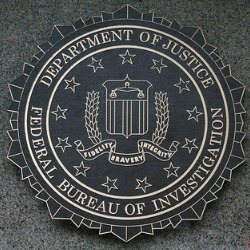BROOKE GLADSTONE: The Memphis newspaper, the Commercial Appeal, agreed in principle with the FBI this month, to settle a lawsuit that’s likely to give the paper more access to the files of Ernest Withers. Withers, who died in 2007 at the age of 85, may have been the preeminent photographer of the Civil Rights movement. Among his iconic pictures, one shot in court against the judge’s orders, of Emmett Till’s great uncle pointing a bony finger at the men accused of killing his nephew and sanitation workers in Memphis holding up “I Am a Man” signs. Withers was there with his camera on the day Martin Luther King was killed. Withers was beaten by police as he marched alongside King at Medgar Evers’ funeral.
But, according to the files on Withers already obtained by the Memphis Commercial Appeal, Withers was also a paid informant for the FBI, codename ME338-R. Commercial Appeal Reporter Marc Perrusquia broke this story in 2010. It began with a tip from a source years earlier.
MARC PERRUSQUIA: He told me 1997 that Mr. Withers had been an informant, but my source told me if you ever write that, I'll deny it. I’d saved my notes. In 2007, Mr. Withers died. At that point, I filed a Freedom of Information Act Request, knowing that when a person is passed on, their privacy rights are diminished. But even then, it was a huge uphill battle because the law protects informants, even after death.
BROOKE GLADSTONE: You wrote that Withers was an ideal informant ‘cause he had extraordinary access.
MARC PERRUSQUIA: He had a great feel for people, a great memory for faces and names. And he was a freelance photographer working for essentially the black press at the time. You know, he knew everybody.
BROOKE GLADSTONE: And they all, you wrote, ended up with FBI files - a schoolteacher, a Democratic Party member, a real estate agent, a pastor. Can you tell me some of the things that the FBI learned from Withers?
MARC PERRUSQUIA: The period that we have to see, at this point, is the sanitation strike.
[CLIP]:
[CROWD HUBBUB]
MARTIN LUTHER KING, JR.: You are reminding, not only Memphis, but you are reminding the nation that it is a crime for people to live in this rich nation and receive starvation wages.
[CROWD CHEERS][END CLIP]
MARC PERRUSQUIA: The big fear was not the movement itself but militancy that had grafted itself onto the movement. And so, he was giving them leaflets, he was passing on tips from meetings. He was taking all sorts of pictures.
Dr. King’s funeral in Atlanta, he calls the FBI back in Memphis and tells them a couple of Dr. King’s aides are coming back to Memphis to continue helping with the sanitation strike. People would get caught in the crosshairs. A lady who was working for the U.S. Civil Rights Commission in Memphis, there are reports in which an informant, who was clearly Withers, is taking pictures of her and giving them to the FBI. The informant says, she is one who will give comfort and aide to the black power groups.
BROOKE GLADSTONE: Why do you think he did it?
MARC PERRUSQUIA: I think he had multiple motives. Ernest Withers always wanted to be a cop. As a matter of fact, back in the late forties, he was part of the Memphis Police Department's first black recruit class, worked there three years, wound up getting fired. He was caught in some kickback scheme at the time. Years later, after the civil rights movement, he gets a patronage job with the state as a gun-carrying agent of the Alcoholic Beverage Commission.
He’s also a patriot. He fought in the Army in World War II. He’s a conservative, really. And then also, we don’t know how much he got paid. The FBI was notoriously tightfisted, but he had eight children. He needed to raise a family.
BROOKE GLADSTONE: You also suggest that he resented the growing power of groups that really were militant, groups like the Invaders who are active in Memphis.
MARC PERRUSQUIA: He had told his friends he was suspicious of them, and you can tell in the various reports he’s distrustful. At the same time, he befriends many of them. And I – I’ve interviewed several of them who felt Ernest Withers was their best friend. “Dear Friend,” they would refer to him, my – “my dad.”
BROOKE GLADSTONE: So what of his legacy, the plans to name a building after Withers, a proposed museum to preserve his archives? Can we live with two Withers or is it too much cognitive dissonance?
MARC PERRUSQUIA: It will always be ambiguous. He took these very vivid poignant pictures that, you know, will live on in our history. It’s a little complicated now. But some people want to say he betrayed the movement, betrayed the black community. That’s their opinion.
BROOKE GLADSTONE: You don't think he did? Those people whose jobs were threatened because they were seen in the company of members of a militant group?
MARC PERRUSQUIA: I’m must gonna leave that for others to decide. You know, there are certainly individual episodes that you know, one could argue there’s some betrayal there.
BROOKE GLADSTONE: Well, you don't have all the information yet.
MARC PERRUSQUIA: True.
BROOKE GLADSTONE: But based on what you have, which Withers had the greater impact?
MARC PERRUSQUIA: I would say Withers, the photographer. Those images are going to live forever. The “I Am the Man” [“I Am a Man”] pictures – you know, no matter – no matter what comes out on him, that’s what’s gonna live on and that’s what the larger public will remember.
BROOKE GLADSTONE: Marc, thank you very much.
MARC PERRUSQUIA: Well, thank you so much for having me.
BROOKE GLADSTONE: Marc Perrusquia is a reporter at the Commercial Appeal.
